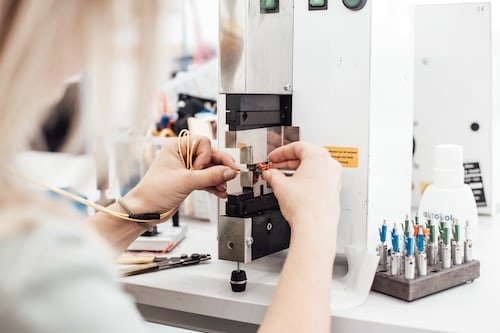Digital Manufacturing and OEM Parts

An OEM is a company that designs, engineers and manufactures complete products or systems. They usually make parts and sub-assemblies that are then resold to other manufacturers who assemble these components into finished products or systems. OEMs are often the most experienced manufacturers in a particular product or system and they can also help reduce production costs by offering expertise on a particular part or system. They may also have access to more advanced materials and tools that allow them to create more efficient and reliable products.
Traditionally, OEMs focus on business-to-business sales while VARs target the public or other end users. However, as of 2021, an increasing number of OEMs are selling their products to consumers directly or through retailers who stock their products. Some manufacturers also offer custom parts manufacturing for oem parts, which are replacement parts made specifically for a certain brand of product. These parts are typically a bit cheaper than aftermarket products, but they may not be as reliable or last as long. Original Equipment Manufacturers (OEM) The word “OEM” can mean many things, but when used in the computer and electronics industries, it refers to a company that purchases a product and incorporates or rebrands it under its own name. It is also used to describe companies that sell hardware and software for use on a computer or other device that is already manufactured by another company.
It also refers to companies that sell components to computer and electronics manufacturers and then assemble them into new computers or other devices. These companies can include companies like Dell and Intel, visit this website for more details. In addition, OEMs can also be found in the automotive industry.
A large number of auto parts are manufactured by OEMs and then resold to an auto manufacturer, which uses them to assemble finished cars that are sold to consumers. There are other types of OEMs as well, including companies that customize products and systems to meet a client's specific requirements. These companies are sometimes referred to as original design manufacturers (ODMs). Learn more info about printing at https://en.wikipedia.org/wiki/List_of_3D_printer_manufacturers. Some OEMs have been successful in using additive technology to produce custom components for their machines and have a catalog of spare parts that they can quickly make when needed. This has helped them to improve service and support operations for their customers, which can have a significant impact on profitability.
Digital Spare Part Manufacturing There is a growing interest in additive manufacturing as a way to address issues with physical spare part inventory management and logistics. While traditional methods can be expensive and require significant investment, digital warehousing can lower these costs while increasing availability of supplies. For example, if a component malfunctions or needs to be replaced, a digital warehousing process can automatically order and receive the needed replacement parts. This helps to keep the inventory up-to-date and minimizes inventory risk and potential loss.
The process of obtaining a spare part requires a work order that describes the problem and details how the work will be done. This information is then sent to an AM service centre, which transforms the 3D model or drawing into files fit for manufacturing and sends them onwards to AM facilities near the maintenance site.
